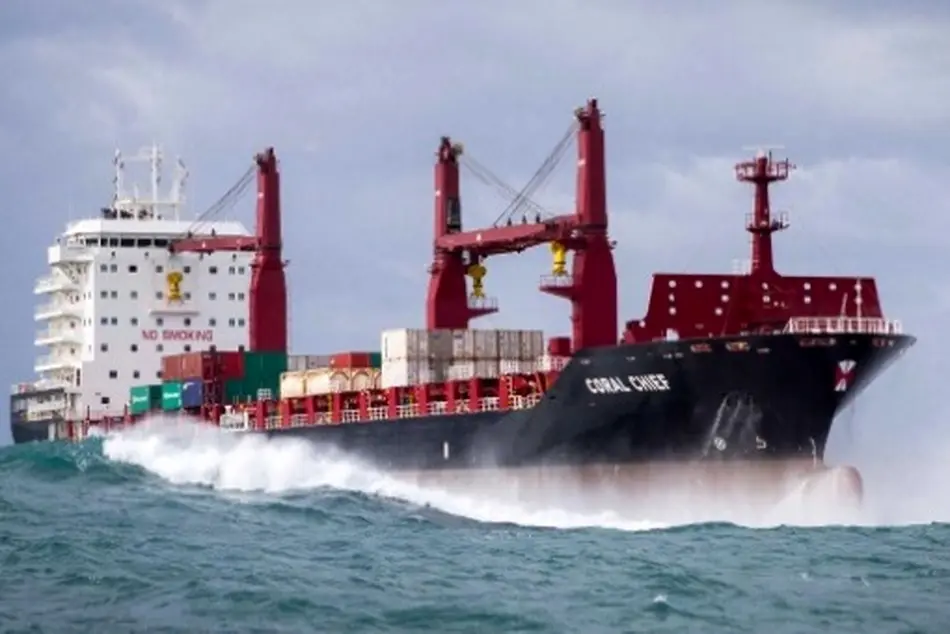What you need to know about marine fuels

TIN news: Bill Stamatopoulos, Business Development Manager SE Europe, Bureau Veritas VeriFuel , says that over the past 50 years the basic quality of residual fuels has remained a constant. Residual fuels offer shipping a low-cost fuel and provide refiners with a market for a by-product of crude oil processing. Mr. Stamatopoulos gives insight into the desired fuel quality for compliance and the efficient fuel management needed onboard.
ISO 8217 is a purchase specification as it defines the required properties of fuels at the time and place of custody transfer. It is presumed that there will be adequate treatment before use. Being on-spec does not necessarily mean good fuel and likewise, off-spec does not necessarily mean poor fuel.
Overall marine fuel quality is a combination of commercial, statutory and technical factors, however, involved parties may be biased towards one or the other, depending on their own interests.
For example, a charterer may be more interested in meeting the commercial value rather than the fuels’ technical properties, contrarily, a ship owner may be more interested in protecting the engine installation and extending time between overhaul. Either way, if the statutory requirements are not met, authorities have the power to fine or arrest a ship.
What has changed with ECAs and the learning experience?
After the implementation of ECAs, marine fuel management has undoubtedly become increasingly complex, with present-day decisions having significant consequences in the future. The shipping community had to take a broader perspective of fuel management by thinking beyond quantity and quality verification when dealing with bunkers, especially as no single solution fits all ships.
Today’s decisions in view of 2020, will depend on several factors such as the age of a ship, its trading pattern, time spent in ECA and the price differential, to name a few.
Historically, the controlling parameters for refiners or blenders have been viscosity and density, more recently, it has been identified that sulphur content is an important consideration. Suppliers and traders have had to develop their methods so that increased blending activities meet the required sulphur content, albeit at the expense of the product’s overall quality.
For a ship operator, Marine Fuels (HFO) with a maximum 1.50% and 1.00% sulphur content meant:
- Increased blending, leading sometimes to unstable fuels due to the imbalance between aromatic and paraffinic blend components. This was operationally demonstrated with the precipitation of asphaltenes resulting to separators’ overloading and filter blocking
- Higher density
- More catalytic (Al+Si) fines due to the slurry oil from refinery Fuel Catalytic Cracking units resulting in cylinder liner and piston ring wear / scuffing.
Marine Fuels with a maximum 0.10% sulphur content means:
- Increased distillate demand
- Introduction of new ECA compliant fuels
- Flash points issues (automotive distillates)
- Cold flow properties
- Typically lower viscosity.
The Refineries
On the production side, refineries are complex integrated businesses. The overall economics or viability of a refinery depends on the interaction of three key elements: the choice of crude oil, the complexity of the refining equipment (configuration) and the desired type and quality of products produced.
Residual fuels sell cheaper than crude oil, so refiners do not set out to make bunker fuels.
For the 2020 era, refiners may invest in conversion units for producing more distillates but this equates to a cost of about 1 billion dollars per refinery and an average time-frame of 5 years, while only 30 months or so are left for the transition.
Some refiners will produce 0.50% sulphur fuel oil, but not enough to supply the entire bunkering industry; so many markets are expected to, once more, take a blending route for achieving compliant fuels.
Today, sulphur content defines fuels. 0.80% sulphur residual fuels are available regionally but we expect a lot of new 0.50% sulphur fuels to rapidly appear close to or after the implementation date. We expect to see different products in different geographical areas.
Correct terms for new ECA compliant fuels and categorization
Even the nomenclature for the so-called new fuels has been vague and sometimes included irregular terms such as, ‘hybrid fuels’. The correct terms are:
- Very Low Sulphur Fuel Oils (VLSFO), containing a maximum of 0.50% sulphur; and
- Ultra Low Sulphur Fuel Oils (ULSFO), containing a maximum of 0.10% sulphur.
Additionally, these new fuels can be defined under an existing category and also from a different perspective:
- ULSFO fuels containing residual components and requiring heating are typically categorized as RM, generally falling under existing ISO 8217, Table 2 residual grades such as RMD 80 or RME 180.
- ULSFO fuels which “distillate are like” and do not need heating for injection, are typically categorized as DM, generally falling under existing ISO 8217, Table 1 distillate grades.
Importance of ISO 8217
ISO 8217 is a live document to reflect today’s reality. Crude oil supplies, refining methods, ships’ machinery, environmental legislation and local conditions vary considerably and are constantly developing.
There are currently no dedicated ISO 8217 specifications for VLSFO and ULSFOs, as it was agreed by the ISO Committee that it would be best to wait for the market to stabilise after initial VLSFOs are introduced.
In terms of quality, there are generally two ways to build up a quality claim:
1. Fuel is off specification (according ISO 8217 tables 1 and 2 or as per general clause)
New ECA compliant fuels have characteristics which may not perfectly align with an existing ISO Grade and any outlying differences should be addressed and additionally agreed between Buyer and Seller.
For a Buyer merely accepting a fuel basis a certificate of analysis, with some times a typical data, can be quite risky.
It is therefore, imperative for the Supplier to commit to an ISO 8217 grade, as this will offer greater protection to Buyers.
2. Fuel is not fit for its intended use
If a charter party is subject to English law then the principle of ‘fit for intended use’ is always valid as per ‘Sale of goods act and the supply of goods and services act’.
No doubt, the transition to 0.50% sulphur is a huge undertaking for both the bunkering and the shipping industry as the entire world will basically be an ECA.
The desirable outcome would be either using compliant fuels or technologies that achieve emission reductions including the fair and safe implementation, while dealing with potential problems such as the genuine shortage of compliant fuels in some areas.
Contributed by Bill Stamatopoulos, Business Development Manager, Bureau Veritas VeriFuel.
The views presented hereabove are only those of the author and not necessarily those of GREEN4SEA and are for information sharing and discussion purposes only.
Bill Stamatopoulos holds a Bachelor in Business Administration and an MBA with specialization in Total Quality Management from the University of Leicester. He joined Det Norske Veritas (DNV) in 1991 and in 2010 Bill became the Regional Manager of DNV Petroleum Services for Europe, responsible for sales, lab operations, technical, surveys and consultancy. Since 2004 he is appointed at the Hellenic Organization for Standardization, Committee 66 for Petroleum Products, by the Hellenic Chamber of Shipping. Bill is a co-Author of ‘Marine Fuels’, a specialized book in shipping, published in June 2008 and currently working in a new edition. During the last 15 years, Bill has given several presentations and training courses on all fuel-related issues. As of 01 October 2015, Bill joined Bureau Veritas VeriFuel .



